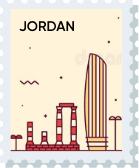MEAN Stack Development: 7 Trends for Meeting Timelines

The MEAN stack, comprising MongoDB, Angular, Express.js, and Node.js has become the most preferred framework for building web applications today. Due to its versatility and ability to handle any type of complex application with JavaScript, we can see a huge increase in the number of businesses employing the MEAN stack in web development. However, while businesses are striving to meet timelines and still deliver an exceptional digital product, staying updated with the top trends in mean stack projects has become crucial.
What is a MEAN Stack Development Project?
A MEAN stack project involves developing a web application using the MEAN set of technologies like MongoDB, Express.js, Node.js, and Angular. These technologies make the development process much easier with client-side and server-side programming using a single language–JavaScript. Due to its high performance, even for complex tasks, the MEAN stack is a top choice for modern web projects.
7 Trends for Meeting Timelines in Mean Stack Development

- Agile Methodologies– Agile methodologies have brought a big revolution in project management for various fields, including MEAN stack development. It supports iterative development, where it breaks down the project into smaller tasks for continuous feedback and amendments. According to statistics on agile adoption, “86% of marketers plan on moving some or all of their teams to using Agile methodologies”. Research by McKinsey and Co. also stated that “93% of Agile organizations reported better customer satisfaction than non-Agile teams. 73% also reported better employee engagement, while 93% reported better operational performance”.
- Automation of Project Management Tools– This is another significant trend for managing timelines in MEAN stack projects. With the help of these tools, you can automate various tasks like project assignments to the team, monitoring the progress, and checking on the deadlines to ensure the project runs smoothly. Some of the most popular names in this category are Trello, Jira, Asana, etc.
- Remote Work– Remote working teams are comparatively faster than in-house ones. Despite different time zones, tools like Zoom, Slack, and Google Meet enable real-time communication. Meetings can be scheduled on priority to discuss the growth of the project, challenges, and deadlines. Also according to the data presented by Owl Labs, “42% of remote workers plan to work remotely more frequently in the next five years”.
- Microservices Architecture– Using microservices architecture for developing MEAN stack projects allows to creation of applications in the form of loosely coupled services. This makes parallel development possible, which reduces the timeline of the development process. According to statistics,”61% of organizations are already using or planning to use microservices”.
- AI and Machine Learning– AI and machine learning trends can be integrated into the project management tools to find bottlenecks or optimize resources. Predictive analysis can run the past data to predict the project timelines and the possible roadblocks that may appear while developing the mean stack project. Today, “more than 37% of organizations have already employed AI in some form within the periodic project management process”.
- CI/CD Practices- This trend reduces downtime significantly by automating the integration and deployment processes. Changes to the code are made at high speed which lowers the chances of any delays. Also, a report from the state of DevOps stated that “organizations released the changes in far more amounts by implementing CI/CD 200 times more frequently than their peers”.
- DevOps Practices– With the integration of DevOps in mean stack projects, there is a significant improvement in efficiency and delivery speed. The collaboration and communication between development and operation teams are better with the DevOps trend in place. A DevOps Trend survey shows DevOps organizations deliver 22% faster.
MEAN vs MERN vs MEVN
While the MEAN stack is the most popular and preferred framework for building web applications, there is still a little confusion around its alternatives.
MERN- The MERN stack is a simple replacement of A in MEAN (AngularJS) with R (ReactJS)
MEVN- The MEVN stack replaces the A in MEAN (AngularJS) with V (Vue.js)
So the basic difference between these three frameworks lies in front-end development (client-side) only. All three are the same in the sense that they are utilizing MongoDB, Express.js, and Node.js for backend development (server-side).
Factors that you may consider to determine which technology stack you should employ:
- Developer’s Expertise– The first key factor that can help you to decide which framework is the best for you is developer’s expertise. You must choose a stack only after asking your developing team their comfort levels, and experience with a particular framework. You may also check their project record and client reviews for a project.
- Single Page Applications– If you are looking to build a complex, feature-rich application, developers often prefer the MEAN stack as AngularJS can efficiently handle complicated web applications.
- Large-Scale Applications– The MERN stack consists of ReactJS, a powerful JavaScript library that is especially useful for building high-performing, fast, and scalable applications. Ideally, choose MERN for large apps with a fast UI.
- Simplicity– Vue.js in the MEVN stack is known for its easy-to-use nature and simple integration. Developers requiring a simple technology for small to mid-sized applications can choose the MEVN stack over others.
Advantages of MEAN Stack
MEAN applications give an advantage over others as they have cross-platform compatibility using a single code. MEAN is ideal for real-time, native, and Angular.js single-page apps but can also be used for other cases.

- Workflow management applications– Businesses often need to achieve seamless coordination between different teams and departments. To serve this purpose, they can utilize the MEAN stack to develop workflow management applications that enable process optimization, progress monitoring, and task assignment. They can even integrate these with real-time data updates for a more enhanced collaboration.
- To-do and calendar applications– Productivity apps like to-do’s and calendars come pre-installed in smartphones and similar devices. Developers generally use the MEAN stack to develop them because it can handle dynamic user interactions and real-time updates. Applications like these enable users to create, edit, and manage their schedules while also syncing their data across multiple devices.
- Interactive forums– Online discussion platforms and community forums need to be equipped with a strong back-end to handle real-time interactions among a large number of users. MEAN stack’s architecture can make it possible while ensuring a smooth and seamless operation.
- E-commerce applications– MEAN stack works best in developing e-commerce applications due to its scalability, and ability to handle heavy traffic loads. MongoDB’s NoSQL database enables businesses to store and manage huge product data efficiently. Not only the inventory can be managed properly, but the customer data can also be stored hassle-free, and retrieved easily.
- Social networking applications– Social networking applications like LinkedIn, Facebook, and Instagram need an instant update for likes, comments, or messages. Node.js in the MEAN stack enables real-time data handling, ensuring a smooth user experience.
The Express.js and AngularJS of MEAN are two of the most significant JavaScript frameworks to support back-end and front-end development. Express.js makes routing easier and it can also manage HTTP requests super easy. Angular is a powerful tool for developing dynamic HTML pages that communicate well with a back-end server.
Wrapping Up
Changes are necessary in every aspect of our lives, so why not in project development? The adaptability of new trends and practices can greatly affect the outcome. Moreover, CI/CD, remote work, AI, agile, microservices, automation, and DevOps significantly reduce MEAN stack project downtime. All of these if used correctly can improve the project timelines and successful project outcomes. These tech trends help manage timelines and keep businesses competitive.
As a leading Mean Stack Development Company, we enable businesses to hire MERN stack developers and take advantage of their years of experience in developing successful mean stack projects. If you are facing technical issues in software development projects, our company can assist. Additionally, contact us to discuss more.

Have an idea?
Get in touch, we’d be
happy to hear from you
We are always looking out for new collaborations, whether you are a client who is passionate about a project or a talent who is interested in joining our team, our doors are always open.
locate us

India (HQ)
618, Shekhar Central, Palasia Square, A.B Road, Indore, Madhya Pradesh, 452001
+918109561401

United Kingdom
Brain Inventory, SBVS, 8 Roundhay Road, Leeds, UK, LS7 1AB
+18008209286

Canada
44 Main Street East Milton, ONCanada L9T 1N3
+4166696505

Jordan
185 Wasfi Al-Tal Street, Ammon Oasis Complex P.O Box 4724 Amman 11953 Jordan
+960770781000

USA
720 Seneca St Ste 107 Seattle, USA 98101
+1(206)6533419
if it's digital,we'll make it.
- Numetric - Online Accounting Software similar to QuickBooks
- Bloomia - Kegel exercise
- Virifi - Blockchain Powered Document Certification & Signing Platform
- Revolution Travel CRM - Custom CRM Built for Travel Agents
- Fatoura - Online Invoicing Platform
- My Fit Mantra - Your health partner
- Ocureel - Relation Building and video sharing Application